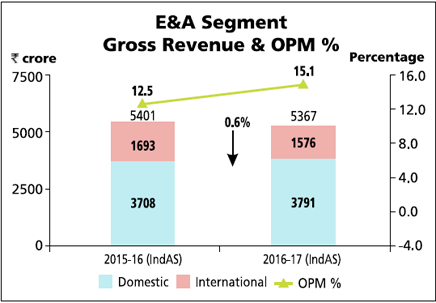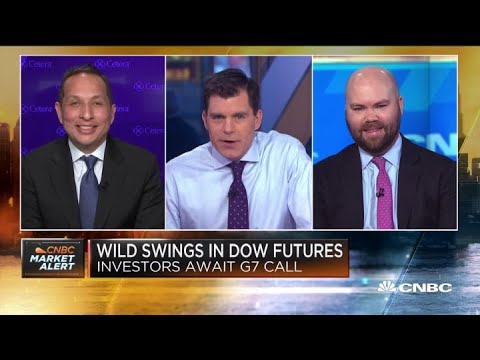
This means that the downside gap three methods formation appears during a downtrend trend and signals the continuation of a bearish trend. On this page, you’ll find the complete list of classical chart patterns and a detailed explanation of each classical technical analysis pattern. classic chart pattern They occur when there is space between two trading periods caused by a significant increase or decrease in price. For example, a stock might close at $5.00 and open at $7.00 after positive earnings or other news. This often results in a trend reversal, as shown in the figure below.
- Pennants are continuation patterns drawn with two trendlines that eventually converge.
- Typically, the flag’s formation is accompanied by declining volume, which recovers as price breaks out of the flag formation.
- Conversely, a trendline that is angled down, called a down trendline, occurs where prices are experiencing lower highs and lower lows.
- HowToTrade.com takes no responsibility for loss incurred as a result of the content provided inside our Trading Room.
- While a price pattern is forming, there is no way to tell if the trend will continue or reverse.
Pennants are another version of flags, but trend lines drawn to unite the highest and the lowest points meet at the area of consolidation and form something close to a triangle. Pennants also serve as an indicator that the trend is likely to continue. However, they cannot be considered strong indicators of upcoming movements and should be interpreted carefully according to the context in which the pattern occurs.
Double bottom
Much like many other trend reversal patterns, technical traders use the piercing pattern to spot new price trends and find buying opportunities. Classical or traditional chart patterns refer to a group of widely common price formations formed on price charts. These patterns are an integral part of technical analysis methodology and are widely used by analysts and technical traders to predict future price movements and establish a trading strategy.

A trend line is simple in use — it is a line that a trader can draw between points on a chart. With two and more prices, one can input a line or a curve and have an idea of where the asset price is headed. Head and Shoulders & Inverse Head and Shoulders These are reversal patterns, which form at the end of a trend. HowToTrade.com takes no responsibility for loss incurred as a result of the content provided inside our Trading Room.
A bearish pennant is a pattern that indicates a downward trend in prices. In a bearish pattern, volume is falling, and a flagpole forms on the right side of the pennant. The symmetrical triangle is drawn by a falling upper trend line and a rising lower trend line, both happening at roughly an equal slope.
Head and Shoulders Pattern
By signing up as a member you acknowledge that we are not providing financial advice and that you are making the decision on the trades you place in the markets. We have no knowledge of the level of money you are trading with or the level of risk you are taking with each trade. HowToTrade.com helps traders of all levels learn how to trade the financial markets. Still, knowing the formation of all chart pattern might be a difficult task. But, we have a solution – you can download our basic chart patterns cheat sheet and our advanced chart patterns cheat sheet. There are different methods and techniques traders use to analyze financial assets.
A divergence is quite a unique phenomenon in technical analysis and trading in general. Basically, it is a ‘disagreement’ between the market price of a certain asset and an oscillator or momentum indicator such as the RSI or the MACD. All investments involve risk, and not all risks are suitable for every investor. The value of securities may fluctuate and as a result, clients may lose more than their original investment. The past performance of a security, or financial product does not guarantee future results or returns.
The Fibonacci tools are used by traders to create support and resistance levels, set target prices, and place stop-losses.
Similarly to the double top, the bounce between the two lows should be moderate. The pattern is confirmed once the price reaches a higher high than the top of the bounce between the two lows. In technical analysis, chart patterns are used to find trends in the movement of an asset’s price.
The Mat Hold pattern is a five candlestick formation that signals the continuation of the ongoing trend. In other words, it is a chart pattern that shows market corrections and take-profit zones before the trend continues to trade in the same direction. The logic behind this pattern is that any trend must have a pullback, retracement, or price correction before the trend continues to move in its initial direction. A bull flag chart pattern is a continuation pattern that occurs in a strong uptrend. Similarly to the high tight flag chart pattern, it signals that the prevailing vertical trend may be in the process of extending its range.
The bearish symmetrical triangle is a technical analysis chart pattern that represents price consolidation and signals the continuation of the previous trend. It is one of the most common triangle chart patterns and is widely used by technical traders to identify entry and exit points. A continuation pattern can be considered a pause during a prevailing trend.
- Basically, it is a ‘disagreement’ between the market price of a certain asset and an oscillator or momentum indicator such as the RSI or the MACD.
- It suggests that as the price tightens up, the uptrend is getting weaker and weaker, and may finally break through the lower trend line.
- The bullish abandoned baby is a three-candle formation used by traders to identify the end of a downtrend and may indicate that the market is about to reverse.
- It is a bearish pattern which shows that the trend is about to reverse.
- Adam Hayes, Ph.D., CFA, is a financial writer with 15+ years Wall Street experience as a derivatives trader.
This pattern usually shows that the current trend is going to continue. Enrol for our 3-day accelerator program to unlock access to the trading room.
Discover videos related to classic chart patterns on TikTok.
As technical patterns aren’t bound by any scientific principle or physical law, their effectiveness highly depends on the number of market participants paying attention to them. Conversely, the falling three methods is a bearish candlestick pattern characterized by a long first bearish candle followed by three tiny bullish candles and another long bearish candle. The theory behind this chart pattern is that prices do not move in straight lines.
He currently researches and teaches economic sociology and the social studies of finance at the Hebrew University in Jerusalem. Options trading entails significant risk and is not appropriate for all investors. Option investors can rapidly lose the value of their investment in a short period of time and incur permanent loss by expiration date. You need to complete an options trading application and get approval on eligible accounts. Please read the Characteristics and Risks of Standardized Options before trading options. The neckline is drawn as a horizontal line passing the point, serving as the support level.

It suggests that as the price tightens up, the uptrend is getting weaker and weaker, and may finally break through the lower trend line. It occurs when the price rises from area 1 and successfully breaks through what is later defined as the neck level (area 2). After that, the asset price reaches its first peak (area 3), falls back to the neck level (area 4), then crawls up to the head (area 5) only to fall back to the neck again (area 6). At this point, it might be the best time to sell, even though the price then goes up and reaches the second shoulder (area 7). When the price returns to the neck level for the third time (area 8), it is a clear indicator that the trend has reversed into a bearish trend for some time (area 9).
It looks like a flag on a flagpole, where the pole is the impulse move, and the flag is the area of consolidation. Classical patterns are among the most well-known and easily recognizable patterns traders use. The double bottom occurs when there are two troughs at the same height, indicating that sellers are in a weaker position than they were. For example, an uptrend supported by enthusiasm from the bulls can pause, signifying even pressure from both the bulls and bears, then eventually give way to the bears. Advisory accounts and services are provided by Webull Advisors LLC (also known as “Webull Advisors”).
LegalZoom Might Just Be Your Cup of Tea .. or ‘Saucer,’ at Least – RealMoney
LegalZoom Might Just Be Your Cup of Tea .. or ‘Saucer,’ at Least.
Posted: Tue, 13 Jun 2023 07:00:00 GMT [source]
Conversely, a trendline that is angled down, called a down trendline, occurs where prices are experiencing lower highs and lower lows. A triangle is a chart pattern that’s characterized by a converging price range that’s typically followed by the continuation of the trend. The triangle itself shows a pause in the underlying trend but may indicate a reversal or a continuation. It successfully passes the support zone (area 2), tests the resistance level (area 3) and sees rejection (area 4). Then the asset tries to break through the resistance level once again (area 5), but likewise fails to break through (area 6) and goes all the way down again, forming a bearish trend (area 7).
What Do Chart Patterns Mean?
This is when the bulls catch their breath during an uptrend or when the bears relax for a moment during a downtrend. While a price pattern is forming, there is no way to tell if the trend will continue or reverse. As such, careful attention must be placed on the trendlines used to draw the price pattern and whether the price breaks above or below the continuation zone.
Bearish flags usually occur during a downtrend; they occur after a sudden upward move and are usually followed by a further slide into a bearish trend. Likewise, it is also important to note that chart patterns give no guarantee that the price follows the predetermined route. It occurs when the price moves down from area 1 and passes what is later called the neck level (area 2). Following that, the asset price reaches its first bottom (area 3), then rises a little back to the neck (area 4) and falls even lower to the head zone (area 5). After that, the asset price bounces and goes back up to the neck (area 6), then slowly returns to the shoulder level.
One way to trade bearish reversal patterns is by opening a short position when the pattern is confirmed (the breakout point). The profit target is often set as the difference between the highest point and the lowest point in the pattern. The ascending triangle forms when there’s a horizontal resistance area and a rising trend line drawn across a series of higher lows. Essentially, each time the price bounces off the horizontal resistance, the buyers step in at higher prices, creating higher lows.
